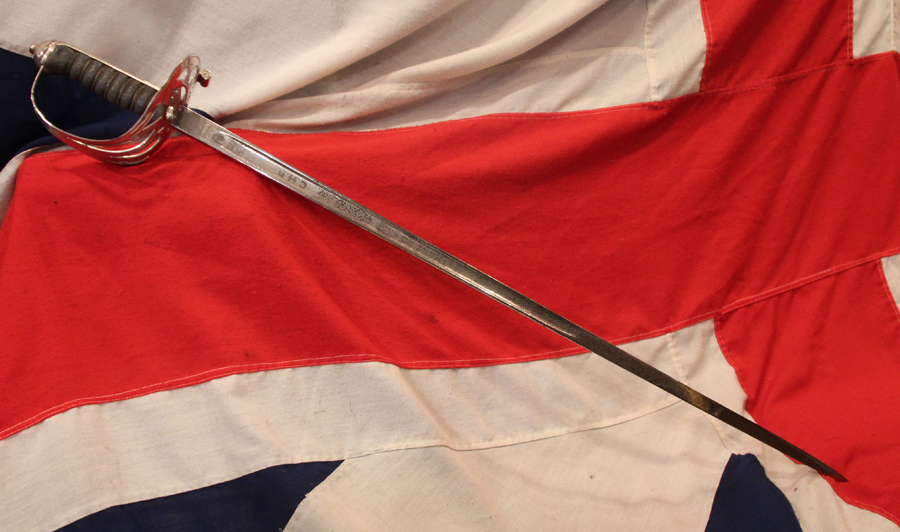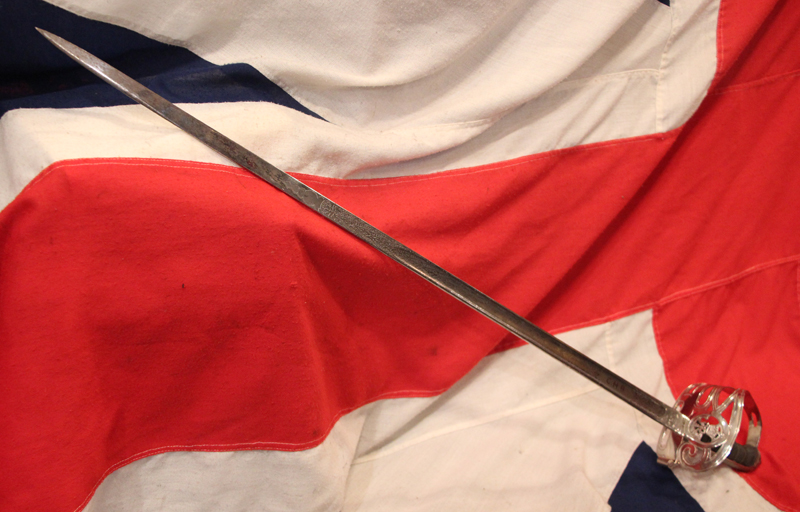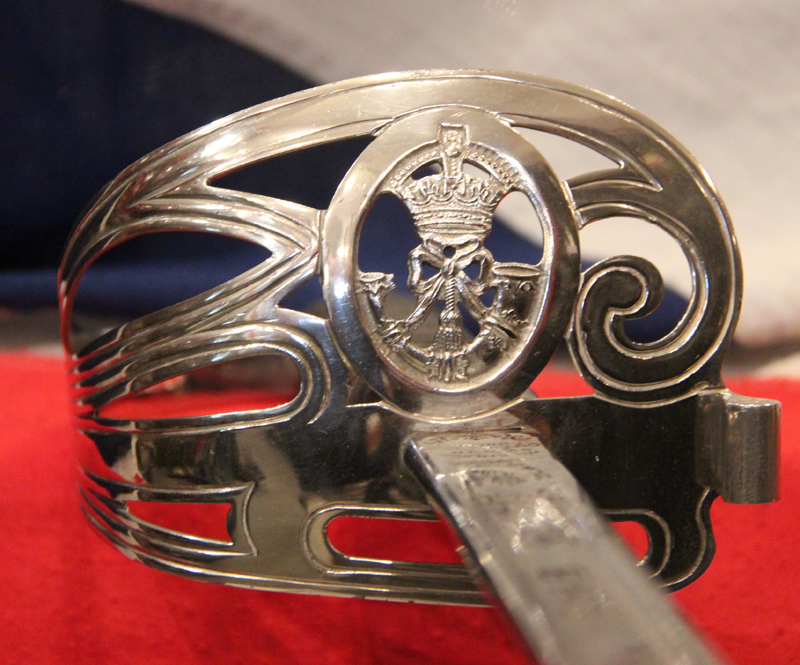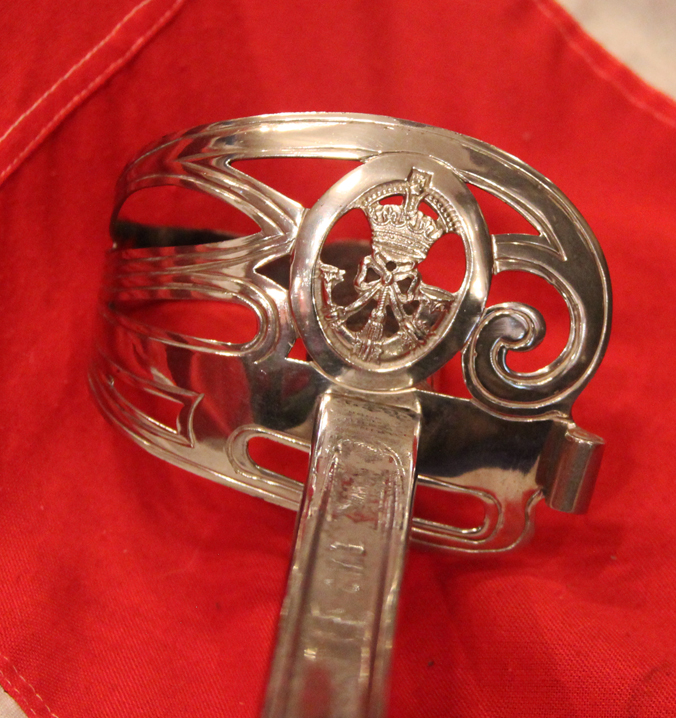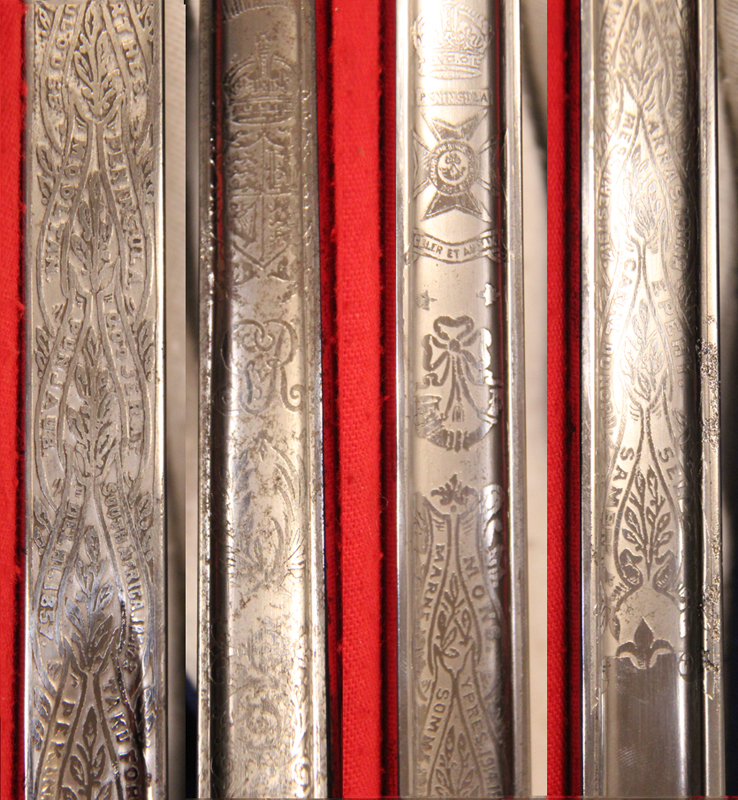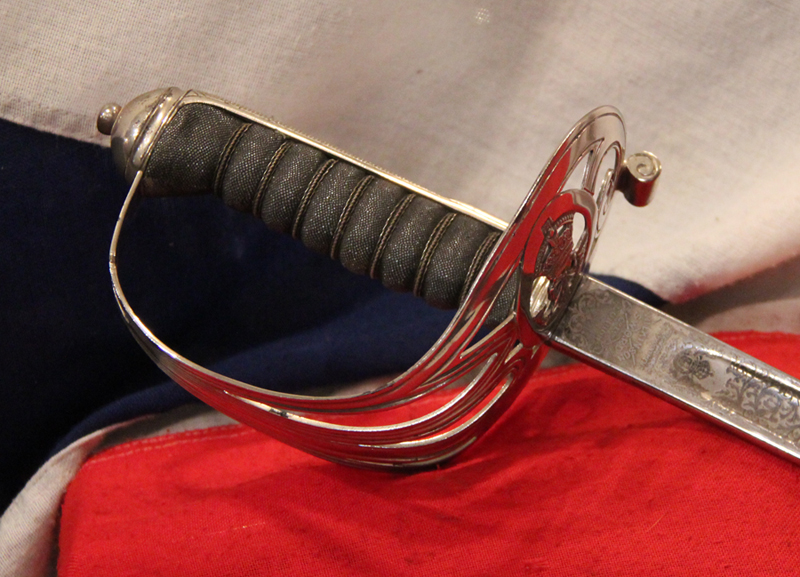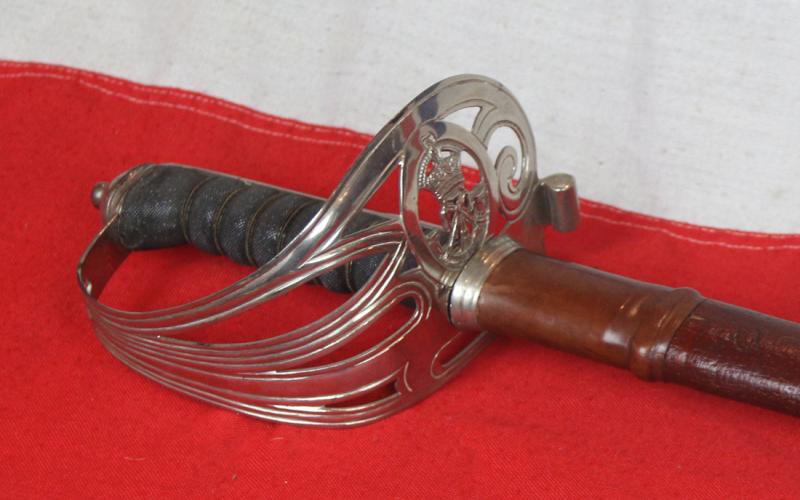Stunning & Very Rare Kings Royal Rifles Corps Officer's 'Battle Honour Blade' Presentation, Combined Combat and Dress Sword
With KRR battle honour embellished blade up to 1918. Made in 1931 by Wilkinson Sword Co. and used by an officer in the KRRC through WW2. It is very rare to find a KRRC Battle Honour presentation pattern sword, in fact this is the first we have seen in over 20 years.
The King's Royal Rifle Corps was an infantry rifle regiment of the British Army that was originally raised in British North America as the Royal American Regiment during the phase of the Seven Years' War in North America known as 'The French and Indian War.' Subsequently numbered the 60th Regiment of Foot, the regiment served for more than 200 years throughout the British Empire. In the First World War
The 1st Battalion landed at Rouen as part of the 6th Brigade in the 2nd Division in August 1914 for service on the Western Front. It saw action at the Battle of Mons in August 1914, the First Battle of the Marne and the First Battle of the Aisne in September 1914 and First Battle of Ypres in October 1914. It fought at the Battle of Festubert in May 1915, the Battle of Loos in September 1915 and the Battle of the Somme in Autumn 1916 before taking part in the advance to the Hindenburg Line, the Battle of Arras in November 1917, the Battle of Cambrai in November 1917, the Second Battle of the Somme in Autumn 1918 and the Battle of the Selle in October 1918.
The 2nd Battalion landed at Le Havre as part of the 2nd Brigade in the 1st Division in August 1914 for service on the Western Front and saw action at the Battle of Aubers Ridge in May 1915.
The 3rd Battalion landed at Le Havre as part of the 80th Brigade in the 27th Division in December 1914 for service on the Western Front and saw action at the Second Battle of Ypres in April 1915.
The 4th Battalion landed at Le Havre as part of the 80th Brigade in the 27th Division in December 1914 for service on the Western Front and saw action at the Second Battle of Ypres in April 1915 but moved to Salonika in November 1915 before returning to France in June 1918.
New armies
The 7th (Service) Battalion landed at Boulogne-sur-Mer as part of the 41st Brigade in the 14th (Light) Division in August 1914 for service on the Western Front and saw action the Second Battle of Ypres in May 1915, the Battle of Delville Wood in July 1916 and the Battle of Flers Courcelette in September 1916 as well as the advance to the Hindenburg Line, the Battle of Arras in April 1917, the Battle of Langemark in August 1917, the First Battle of Passchendaele in October 1917 and the Second Battle of Passchendaele in November 1917 before taking part in the Battle of St Quentin in March 1918 and the Battle of the Avre in April 1918.
The 8th (Service) Battalion landed at Boulogne-sur-Mer as part of the 41st Brigade in the 14th (Light) Division in May 1915 for service on the Western Front and saw action most of the same battles as the 7th Battalion. The 9th (Service) Battalion landed at Boulogne-sur-Mer as part of the 42nd Brigade in the 14th (Light) Division in May 1915 for service on the Western Front and saw action most of the same battles as the 7th and 8th battalions.
The 10th (Service) Battalion and 11th (Service) Battalion landed at Boulogne-sur-Mer as part of the 59th Brigade in the 20th (Light) Division in July 1915 for service on the Western Front and saw action at the Battle of Mont Sorrel in June 1916, the Battle of Delville Wood in July 1916 and the Battle of Guillemont in September 1916 as well as the Battle of Flers Courcelette in September 1916, the Battle of Morval in September 1916 and the Battle of Le Transloy in October 1916 before taking part in the advance to the Hindenburg Line, the Battle of Langemarck in August 1917, the Battle of the Menin Road Ridge in September 1917, the Battle of Polygon Wood in September 1917 and the Battle of Cambrai in November 1917.
The 12th (Service) Battalion landed at Boulogne-sur-Mer as part of the 60th Brigade in the 20th (Light) Division in July 1915 for service on the Western Front and saw action most of the same battles as the 10th and 11th Battalions. The 13th (Service) Battalion landed at Boulogne-sur-Mer as part of the 111th Brigade in the 37th Division in July 1915 for service on the Western Front and saw action at the Battle of Morval in September 1916, the advance to the Hindenburg Line and the Battle of Arras in April 1917 as well as the Battle of Passchendaele in Autumn 1917, the Battle of Cambrai in November 1917 and the Hundred Days Offensive in Autumn 1918 before taking part in the Battles of the Hindenburg Line and the Final Advance in Picardy.
Seven members of the regiment received the Victoria Cross. Complete with its field service leather scabbard
Code: 22171
1150.00 GBP

